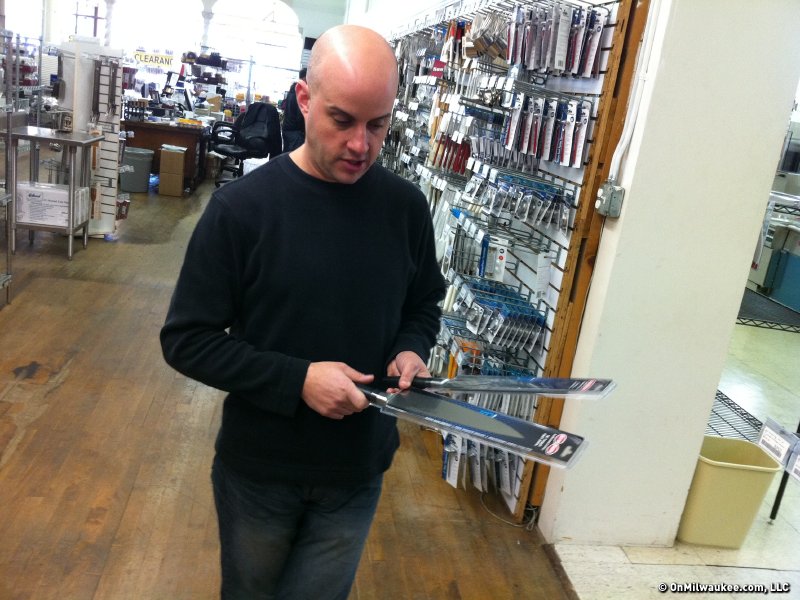October is the fourth-annual Dining Month on OnMilwaukee.com. All month, we're stuffed with restaurant reviews, delicious features, chef profiles, unique articles on everything food, as well as the winners of our "Best of Dining 2010."
What makes a good cook a great chef? If it's your job, you've probably studied under a classically-trained professional or attended a culinary institute.
If you're the master of your own kitchen, you start with good recipes, a great attitude -- and the right tools for the job.
"We all need good knives, right?" says The Pfister's Executive Chef Robert Ash. "You want to make sure that you'll have a good, sharp knife that is going to last you. As chefs, we consider them as extensions of our arms."
As for sharpening your knives, Ash says it depends on how you store them, as well as how often you use them. "You can always use a sharpening steel," he says, which will keep your knives sharp enough between the major sharpenings every three to six months.
"If you get a kitchen block, store your knives with the blades facing up, because you dull them every time you take them in and out. If you're storing a knife in a drawer, wrap it in a heavy-duty paper towel to help protect the blade."
Ben Minkin, one of the owners of Fein Brothers, a local restaurant and home kitchen supply store, agrees.
"I'm all for a good knife, but it doesn't have to be an expensive knife," he says. "We have great chefs' knives that are 30-some dollars."
But he also says you could spend $150 on a knife if you feel so inclined.
Minkin says a good knife must be fully forged -- that is, the blade goes all the way through to the end of the handle. It should also be made of high carbon steel, and it should have a smooth, comfortable handle.
Another debate among home chefs is whether or not to use non-stick or traditional, stainless steel cookery.
"They both work great," says Ash. "I have both at home. For stock pots, you definitely want to go with stainless steel. They are going to be a little bit more but they cook more evenly and will last a lot longer."
Says Minkin, "I like the coated cookware personally; I think it's easier to cook with and to clean, but you've got to know the proper utensils for each. You can't use metal in a nonstick pan. Essentially, they are the exact same pans."
Beyond that, it's important to have the basics.
"When it comes to small ware, you need to have good whisks and wood wooden spoons," says Ash.
Adds Minkin, "A couple cutting boards and a couple good pieces of cookware, like sauté pans, sauce pots -- that's about what you need."
In terms of trends, both Minkin and Ash point to some new tools at-home chefs are trying out.
Ash says microplaners that extract flavors from hard cheeses, onions, citrus and ginger are an up-and-coming part of modern kitchens.
Minkin sees an increase in induction cooking: burners that use magnetic properties from pans that boil water -- safely -- in about two minutes.
"You can put your hand on the burner and won't get burned at all," says Minkin. "It's a cool, trendy way to cook."
Andy is the president, publisher and founder of OnMilwaukee. He returned to Milwaukee in 1996 after living on the East Coast for nine years, where he wrote for The Dallas Morning News Washington Bureau and worked in the White House Office of Communications. He was also Associate Editor of The GW Hatchet, his college newspaper at The George Washington University.
Before launching OnMilwaukee.com in 1998 at age 23, he worked in public relations for two Milwaukee firms, most of the time daydreaming about starting his own publication.
Hobbies include running when he finds the time, fixing the rust on his '75 MGB, mowing the lawn at his cottage in the Northwoods, and making an annual pilgrimage to Phoenix for Brewers Spring Training.




